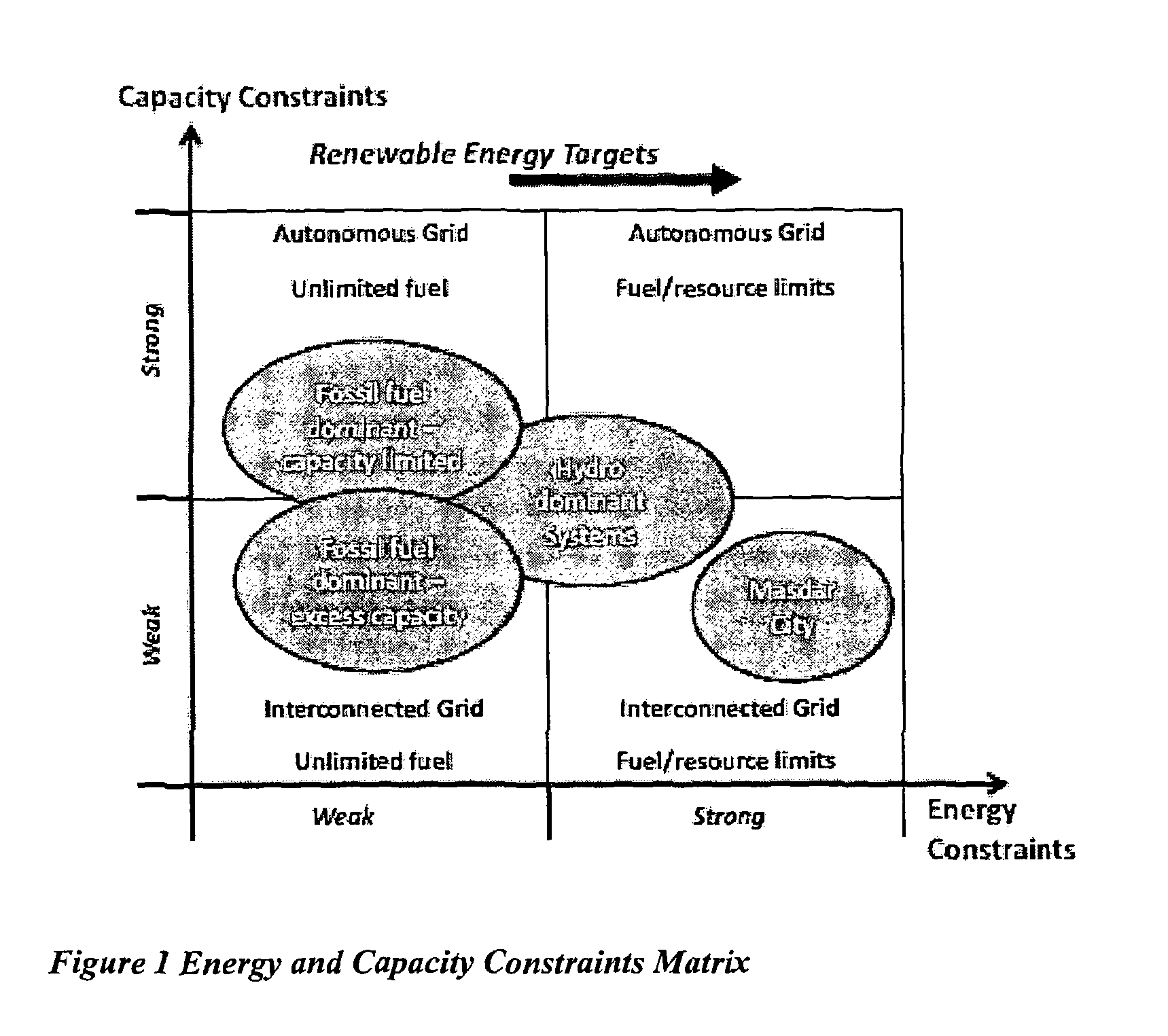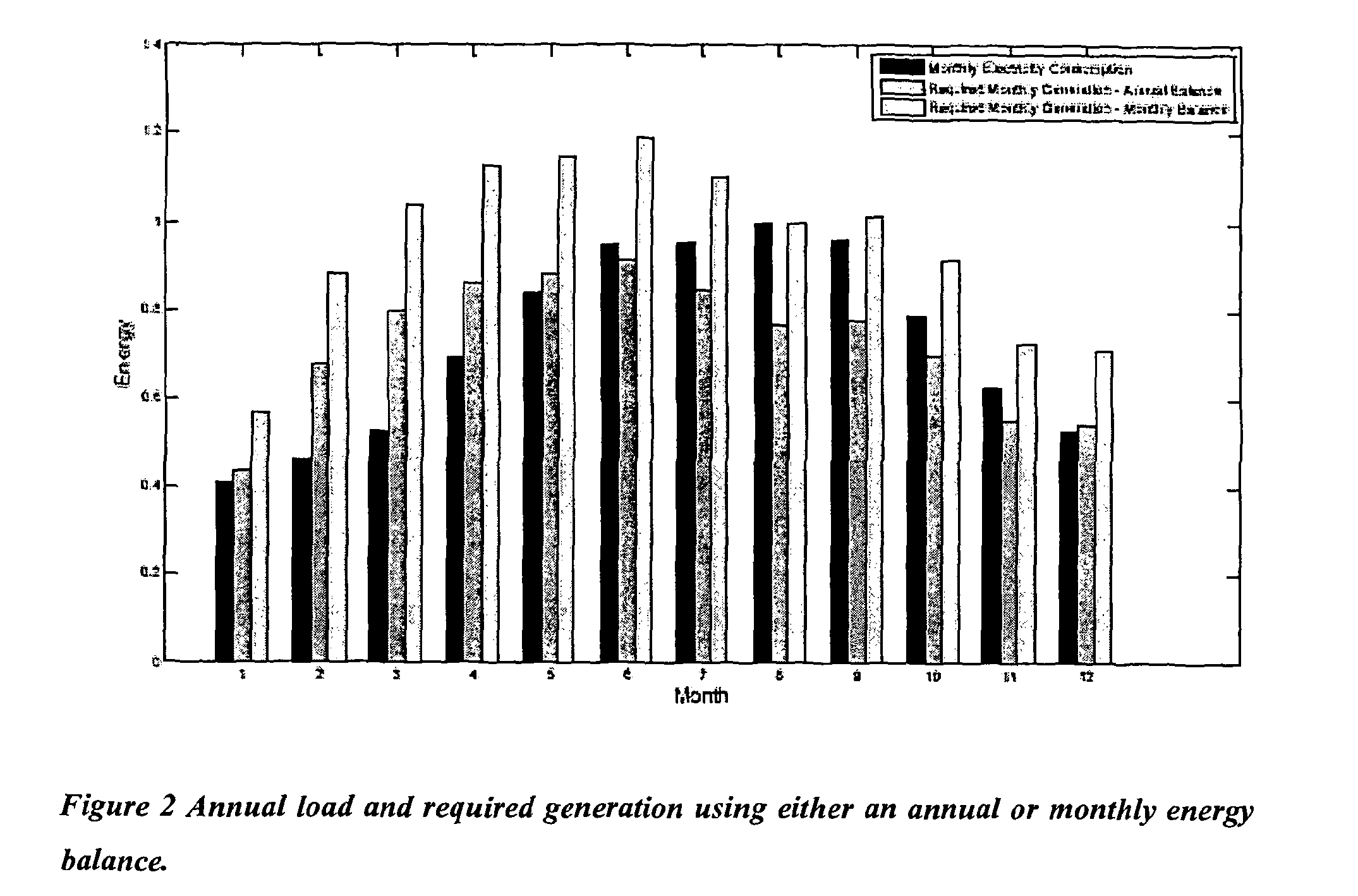Hybrid energy market and currency system for total energy management
- Summary
- Abstract
- Description
- Claims
- Application Information
AI Technical Summary
Benefits of technology
Problems solved by technology
Method used
Image
Examples
Embodiment Construction
[0028]The following describes how energy credits can be used as a means to reflect the physical reality of energy consumption, while creating a market mechanism that allows users in aggregate to efficiently manage their total consumption in accordance with supply-side constraints imposed by renewable energy targets. The application can be a city such as Masdar, with a 100% renewable energy target, or other regions and municipalities with lower energy-based targets.
[0029]We first provide an overview of the basic concept and defines the commonly use terms. We then discuss how the energy credits will be issued and allocated and the coverage of the system. We then describe in greater detail the rules and functions of the energy credit spot and forward markets. Finally, we present a summary.
[0030]As a potential application in Masdar City, the EBCS will be known as the Masdar Energy Credit (MEC) system, which will introduce a scheme of standardized energy credits as a parallel currency fo...
PUM
 Login to View More
Login to View More Abstract
Description
Claims
Application Information
 Login to View More
Login to View More - R&D
- Intellectual Property
- Life Sciences
- Materials
- Tech Scout
- Unparalleled Data Quality
- Higher Quality Content
- 60% Fewer Hallucinations
Browse by: Latest US Patents, China's latest patents, Technical Efficacy Thesaurus, Application Domain, Technology Topic, Popular Technical Reports.
© 2025 PatSnap. All rights reserved.Legal|Privacy policy|Modern Slavery Act Transparency Statement|Sitemap|About US| Contact US: help@patsnap.com



